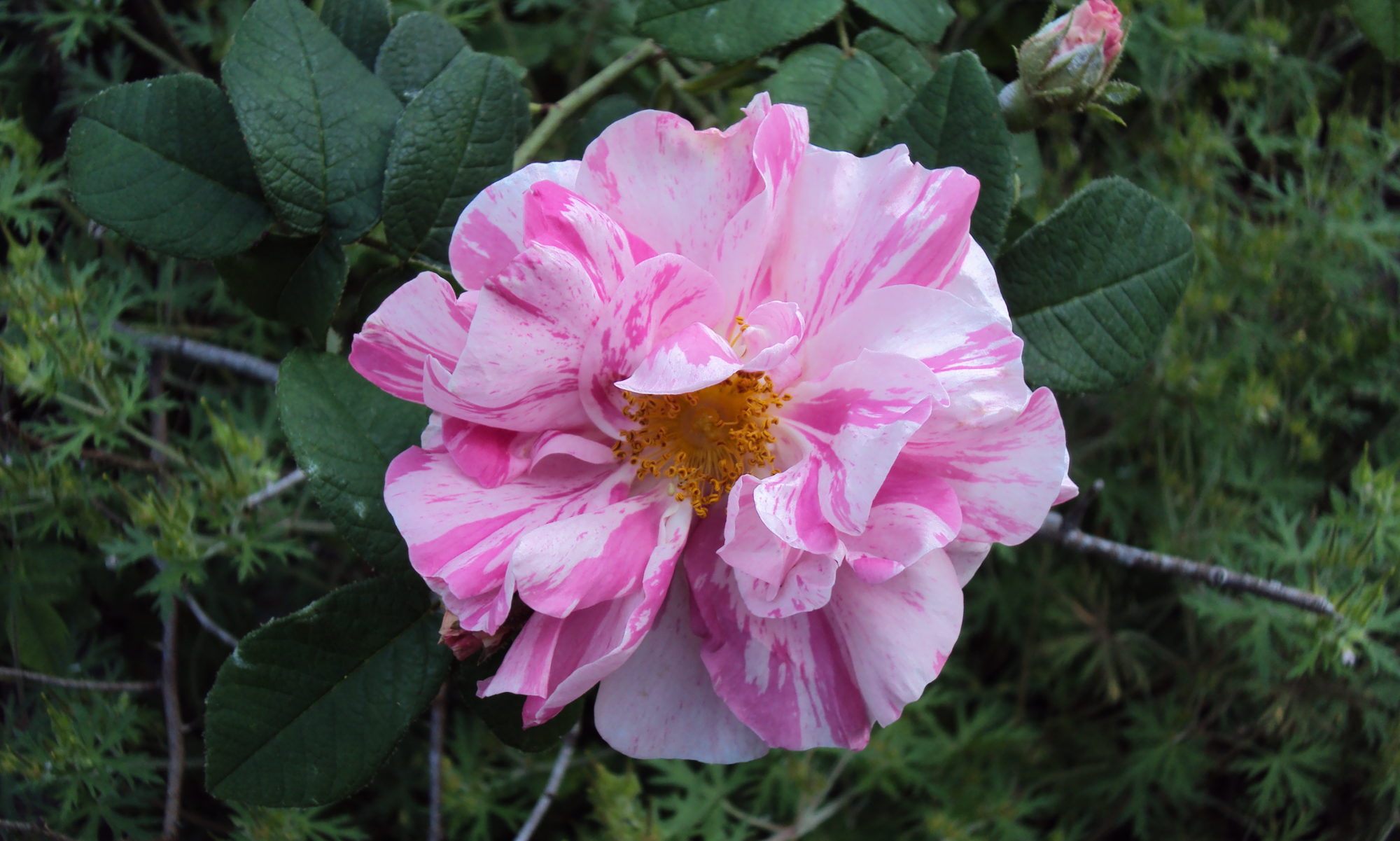Yesterday morning I was off to teach my “Roses Then and Now” class at Atlantia University in Lynchburg, VA, so I was not in the garden. It has been a busy past couple of weeks so I have not gotten much time in the garden of late.
The weather is going to be over 90 degrees today; I think this may be the first time that the temp will surpass the 90 degree mark this year. We did have period where it was misty rain and about 70 degrees… that felt kind of strange and not what I expect in late may early June. Alas that is just about perfect weather for the various fungal pests like black spot and powdery mildew. It looks like the Souv. dela Malmaison has gotten nailed by the blackspot and not much is blooming right now, though some bushs like the Double Blanc de Corbet have deadheads/immature hips so I think some things have been blooming and I just haven’t noticed. There are a few blossoms on the Old Blush, and The Fairy and White Pet are blooming. I guess there are also some blooms on the Crepescule and Alister Stella Grey, but not many. I did notice some dead heads on one of the Rosa Mundi that I rescued from the “Jungle Bed”… I also noticed that I need to weed those pots and redo the watering to give them more water. A couple of the canes that were viable before have now dried up and died. <sigh>
One of the things I have noticed in the past is that the gallica roses, like Rosa Mundi and Apothecary Rose, seem to get powdery mildew. I noticed this both on the existing bushes and the new ones I got this year. I am trying an alternative spray method where the active ingredient is hydrogen peroxide. According to the chart I found online, the correct ratio is 16 parts water to 1 part Hydrogen peroxide (at 3%, which is what is sold in stores). I sprayed it on last monday morning but later found the suggestion that it should be sprayed in the evening or night since sunlight will degrade the H202 faster. I also added a drop of dish detergent to the spray to reduce the water tension, so the spray would spread out more and not bead up on the leaves. Turns out there is some science behind the idea of using hydrogen peroxide against fungus like powdery mildew. While I have not found any direct analysis of H2O2 as a fungicide, I did find a paper that talked about how roses actually generate hydrogen peroxide-like compounds as a method of fighting fungal infections. At one point in the study, the authors did spray a hydrogen peroxide solution on infected rose plant (or may be they sprayed before inoculating the plants) then waited a while then analysed the fungal growth. If I read the chart correctly, fungal growth was significantly hampered at higher concentrations. We will see if that pans out in my garden…. So far it has been hard to say.
I did make it into the garden for a few minutes today. One of the tasks that has been on my list for a couple of weeks was to switch out the mount location for 4-way garden hose splitter (manifold). It had been mounted on a short section of metal trellis while the new mount base is made of wood. My watering system for the rose beds is the timer hangs of the faucet and I have short length of hose that leads to the 1-to-4 splitter and from there 4 hoses go out and connect to hoses laid out in each of the beds. However, when I went to redo the mount, I found one of the hoses disconnected at the splitter and 2 others not connected at the garden. This means that for however long they have been disconnected, 3 out of 4 hoses have been watering the area around the faucet rather than the roses. Grrrrr. The only explanation for this is the guys who come mow my yard disconnected the hoses . I set the system up to make it easy for the lawn guys to disconnect the hoses at the beds and coil them back bu the faucet. However it will pretty much depends on the workers RECONNECTING thing when they are done…. which it looks like they didn’t do. I will have to have a talk with them…. Now I need to call the yard guys and tell them how disappointed I am.
